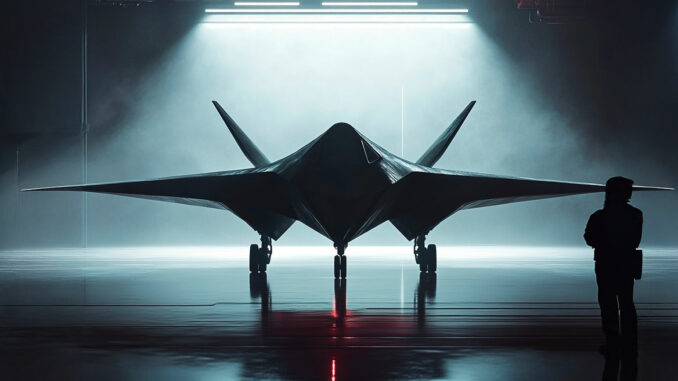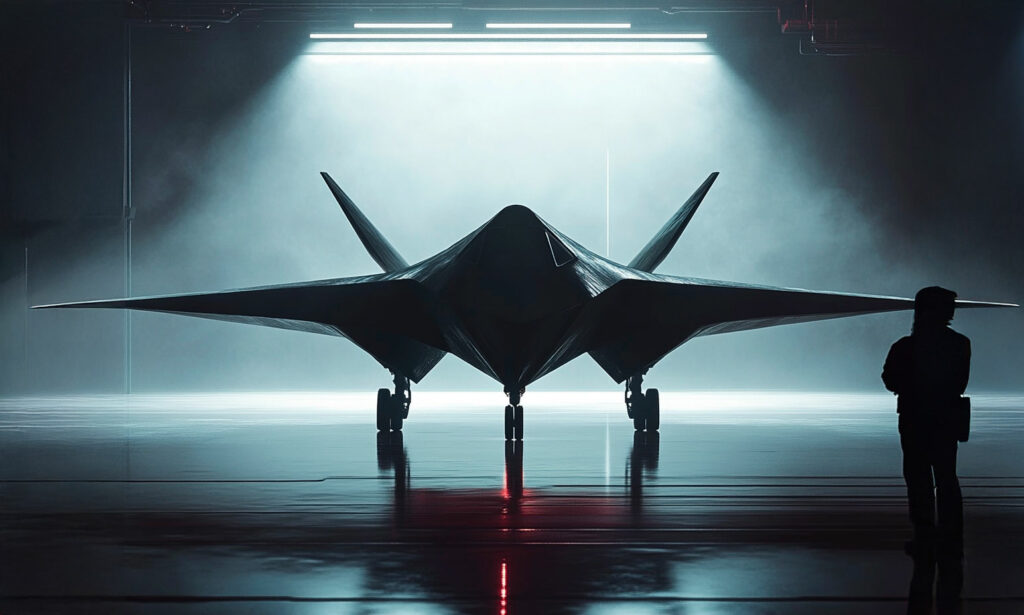
The NGAD program aims to produce a lower-cost fighter than the F-35, but experts are concerned about compromises on capability and efficiency.
The US Air Force’s NGAD sixth-generation fighter program focuses on creating an advanced fighter at a lower cost than the F-35, currently estimated at between 75 and 95 million euros per unit, depending on the model. This project raises questions about the feasibility of achieving such a price without compromising essential performance and capabilities. The aim is to achieve air supremacy against adversaries such as China, while maintaining viable costs.
F-35 cost trends and the NGAD challenge
The high cost of the F-35, estimated at around €75-95 million per unit, has raised concerns about cost-cutting opportunities for the NGAD program. The F-35 has come under significant pressure from inflation, supply chain disruptions and design changes. These factors have impacted the production schedule and associated budgets. By aiming to lower the price of the NGAD unit to a level equal to or lower than that of the F-35, the US Air Force is seeking to ensure mass production without compromising quality.
The US Air Force’s initial target for the NGAD is around 250 million euros per unit, three times the cost of the F-35. To reduce this cost, compromises will have to be made, potentially to the detriment of the aircraft’s performance. Stealth and mission adaptability technologies, which characterize the sixth generation, require substantial investment to guarantee their effectiveness.
Compromise on capabilities: the risks of cost-cutting
The challenge of keeping costs down without compromising operational capabilities is at the heart of the discussions. A sixth-generation aircraft needs extended range, improved detection capability and enhanced stealth features to dominate highly contested airspace. By limiting the budget, the US Air Force risks creating an aircraft that could perform less well against adversaries equipped with comparable technologies.
Experts such as Heather Penney of the Mitchell Institute have expressed reservations about the idea of cutting NGAD costs. Penney pointed out that excessive compromise could lead to a degradation of the aircraft’s operational value, making it less able to respond to threats. If the NGAD is to compensate for the functions of the F-22 and outperform the F-35, it will have to include advanced technologies, the costs of which are incompressible.

Integration of stand-alone and modular technologies: Towards a viable solution
To achieve a compromise between cost and performance, the US Air Force is considering the integration of collaborative autonomous aircraft (CCA) with the NGAD. These drones, acting as intelligent wingmen, could carry out reconnaissance and attack missions, while lightening the workload of the piloted aircraft. This would reduce the size and cost of the NGAD, while preserving its effectiveness in air superiority missions.
The integration of modular components could also help reduce costs. By allowing sensors and systems to be added or replaced according to mission requirements, the US Air Force could optimize the NGAD’s configuration according to threats. However, this approach requires advances in system standardization to ensure interoperability between the various components.
Budgetary challenges: funding and international cooperation
The viability of the NGAD relies on volume purchases, but production will be limited to around 200 units, making it difficult to amortize costs. Unlike the F-35, which enjoys international support with more than 15 partner countries, the NGAD is destined to be an exclusively domestic program, which limits potential economies of scale.
The US Air Force has also ruled out the sale of the NGAD to foreign partners, increasing the financial burden on the US military budget alone. This decision could affect strategic relations with allies such as the UK and Australia, who have expressed an interest in sixth-generation technologies. The lack of cost-sharing could also restrict the number of aircraft available to respond to large-scale conflict scenarios.
A race against time for the NGAD
The US Air Force is in a race against time to make the NGAD operational by 2030, while respecting budgetary and technological constraints. Cost reduction is crucial to avoid deployment delays, but must not compromise operational capabilities in the face of adversaries such as China. Modularity, UAV integration and system optimization will be key to achieving this objective, without sacrificing aircraft quality.
War Wings Daily is an independant magazine.